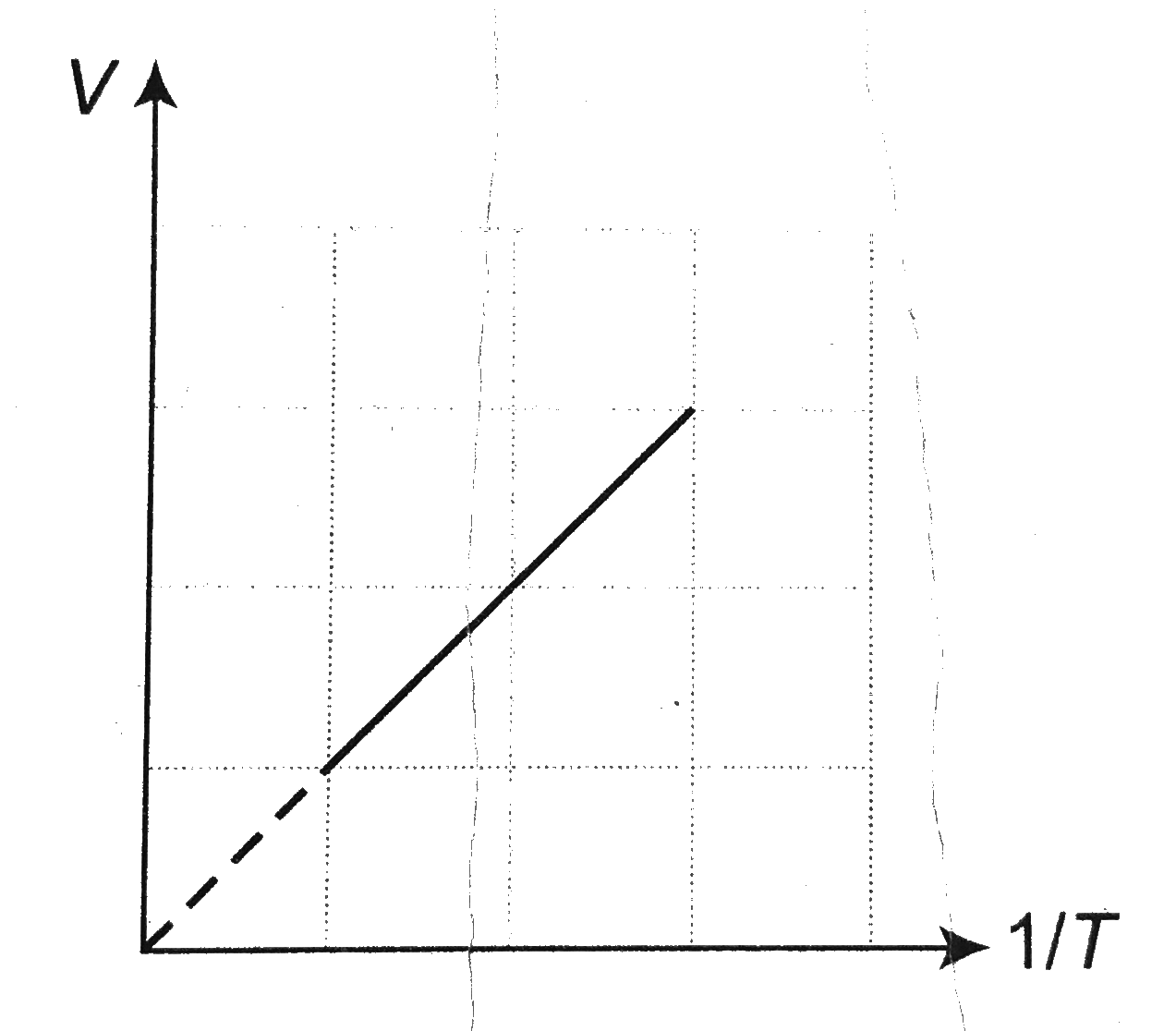One mole of a monoatomic ideal gas is expanded by a process described by PV3 = C where C is a constant. The heat capacity of the gas during the process is given by R is the gas constant.A 2RB 5/2 RC 2/3 RD R
Correct option D RExplanation:Monoatomic gas
Related Solutions
One mole of a monoatomic ideal gas is expanded by a process described by PV^(3) = C where C is a constant. The heat capacity of the gas during the process is given by (R is the gas constant)
View Solutionone mole of an ideal monoatomic gas PV^3 = undergoes a process described by a constant. The heat capacity of the gas during this process is:
View SolutionOne mole of an ideal monoatomic gas undergoes a process described by the equation PV^3 = constant. The heat capacity of the gas during this process is
View SolutionOne mole of an ideal monoatomic gas undergoes a process described by the equation PV^3 = constant. The heat capacity of the gas during this process is ……..
View SolutionOne mole of an ideal monoatomic gas undergoes a process described by the equation . The heat capacity of the gas during this process is
View SolutionOne mole of an ideal monoatomic gas undergoes a described by the equations PV^(3) = constant The heat the gas during this process is :
View SolutionOne mole of an ideal monoatomic gas undergoes a process as shown in the figure. Find the molar specific heat of the gas in the process.

R is a gas constant.
View SolutionOne mole of an ideal monatomic gas undergoes a process described by the equation = constant. The heat capacity of the gas during this process is
View SolutionOne mole of an ideal monatomic gas undergoes a process described by the equation = constant. The heat capacity of the gas during this process is
View SolutionOne mole of an ideal monatomic gas undergoes a process described by the equation PV^(3) = constant. The heat capacity of the gas during this process is
View SolutionOne mole of an ideal gas undergoes a process such that . The molar heat capacity of this process is 4R, where R is universal gas constant. Then,
View SolutionIn a process, temperature and volume of one mole of an ideal monoatomic gas are varied according to the relation VT= K, where K is a constant. In this process the temperataure of the gas is increased by . The amount of heat absorbed by gas is (R is gas constant).
View SolutionIn a process, temperature and volume of one mole of an ideal monoatomic gas are varied according to the relation VT= K, where K is a constant. In this process the temperataure of the gas is increased by DeltaT . The amount of heat absorbed by gas is (R is gas constant).
View SolutionIn a process, temperature and volume of one mole of an ideal monoatomic gas are varied according to the relation VT= K, where K is a constant. In this process the temperataure of the gas is increased by DeltaT . The amount of heat absorbed by gas is (R is gas constant).
View SolutionThe molar heat capacity of an ideal gas in a process is C, a/T where a is a constant. If, Ratio gamma = C_p/C_v known to the gas, then in the same process T_0 From etaT_0 The work done by one mole of gas during heating will be:
View SolutionFind the molar heat capacity (in terms of R ) of a monoatomic ideal gas undergoing the process: PV^(1//2) = constant ?
View SolutionFind the molar heat capacity (in terms of R ) of a monoatomic ideal gas undergoing the process: PV^(1//2) = constant ?
View SolutionFind the molar heat capacity (in terms of ) of a monoatomic ideal gas undergoing the process: ?
View Solutionकिसी प्रक्रम में एक परमाणुक आदर्श गैस के एक मोल के परिवर्तन को समीकरण = स्थिरांक द्वारा व्यक्त किया जाता है। इस प्रक्रम की अवधि में गैस की ऊष्मा धारिता होगी
View Solution